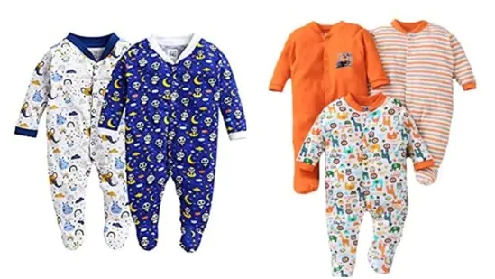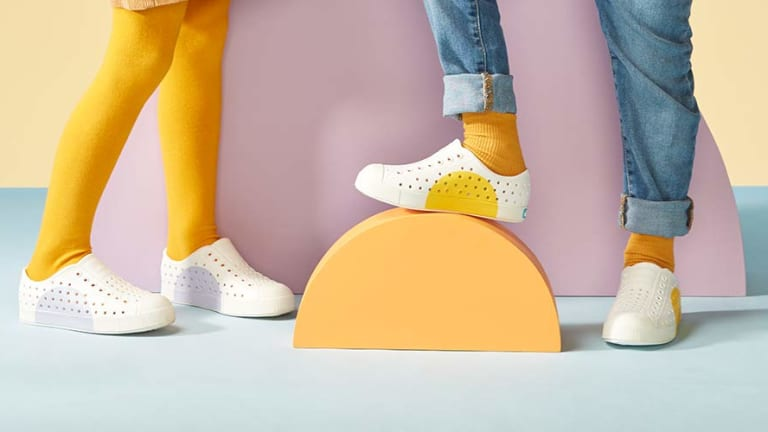Are 0 3 Month and 3 Month Clothes the Same?

To purchase baby clothes of the right size, you must understand different baby sizing charts because baby cloth brands use varied sizes. This article will look at 0 3 month vs. 3 month clothing to help many new parents who cannot differentiate the two.
Are 3 months and 0 3 month clothes the same?
0-3 month and 3-month size clothing are sizing tags of different brands fit for newborn to three-month-old babies. 3M is the sizing tag of carters while 0-3 months is the sizing tag for other brands like Baby Gap or Old Navy.
Therefore, choosing 0-3 months or 3 months clothing depends on the brand you are purchasing. Most babies wear this size from 2 weeks to three months old, but the fitting depends on the size and shape of the baby. Just like adults, babies have varied body shapes and sizes, and this should be the determining factor when buying clothes and not the age.
Many new parents assume that buying baby clothes is easy because they are sized by age; unfortunately, the age sizing is not accurate. If you are expectant and preparing to shop for your newborn, this guide will give you all the information you need concerning 0-3 month clothing. Read on.
See also How Do Gap Kid Sizes Run
Height and weight 0 3 month clothing size
As already stated, baby cloth brands size their clothes within the same age group differently. There is no standard for weight and height for 0-3 month clothing. Check the chart below:
Height and weight chart for 0-3 month clothing size
| Brand | Weight | Height |
| Carters | 9-12.5lbs | 21.5″-24″ |
| Amazon essentials | 9-12.5lbs | 21.5″-24″ |
| Gerber | 8-12lbs | 21″-24″ |
| Old navy | 7-12lbs | 19-23″ |
| Cat + jack | 9-12lbs | 20.5-23.5″ |
| Baby Gap | 7-12lbs | 18-23″ |
It is also important to note that some brand sizing is true to size; others run small while others run large. This explains why Carter’s clothing fit precisely as per the chart, while other brands might be too large or small for the same size.
Buying baby clothes is not rocket science, but it is not as straightforward as many assume. To make the right purchase, take time to study different brands’ size charts and understand the body of your child.
How long will my baby wear 0 3 months?
Most babies wear 0-3 month size clothes from 2 weeks to three months. However, there is no specific age limit for babies to outgrow 0-3 month clothes because they have different growth rates and body shapes. Depending on the birth weight and growth rate, some babies outgrow this size by 2 months old.
Gender is also another determinant of how long your baby will stay in 0-3 months ‘ clothes. In general boys at this age grow faster than girls and therefore they outgrow their clothes more quickly.
Note that these statistics are not facts, therefore, do not use them to gauge the growth rate of your babies because every baby is unique. There is nothing to worry about if your healthy baby stays longer in their 0-3 month clothes than their age mates.
What’s more, how long it takes the baby to outgrow 0-3 month clothes depends on the brand. As seen in the chart above, some 0-3 months are larger than others. For instance, a baby is likely to wear 0-3 months from Carter longer because it is meant for 9-12.5 pounds compared to a 0-3 from Baby Gap sized for 7-12 pounds.
See also Does Carters Run Small
How many outfits does a 3 month old need?
The right number of outfits to buy depends on your laundry schedule, baby growth rate, and the season of the year.
Most parents are excited to buy 0-3 month clothes because they are primarily adorable and want their newborns to look the best. However, it is advisable not to buy too many pieces for this size because babies outgrow them very fast.
A large percentage of babies start wearing their 0-3 months sized clothes when they are two weeks old and outgrow them by two and half months. This is a 2-month window before you go to the shops to buy a size up. Therefore new parents are advised to buy a few pieces and stock a size up instead.
Another factor determining the number of clothes you will buy is your cleaning schedule. If you cannot do laundry every day, you will need more clothes because babies can take up to three changes in a day. If you plan to do laundry weekly, it means that you should have at least 24 outfits.
The season during which you deliver your baby is another main consideration. Babies born over the winter require extra layering for warmth and, therefore, more cloth sets. If 24 outfits are enough for the summer, you will need to double this number for the winter.
See also Newborn vs 0-3 month size
When to switch from newborn to 0 3 month clothes
Some babies start with 0-3 month outfits immediately after birth, while others begin with newborn or preemie size clothes. It can be very hard for the latter group to decide the right time to switch to a larger size, especially if it is your first baby. However, just like adults, kids should fit in their clothes comfortably. This means that the clothes should not be too tight, short, or baggy.
If you struggle to dress the baby or the clothes appear too tight, it is time to move a size up. Also, compare your baby’s current height and weight with the sizing chart and buy more oversized clothes if need be.
It is essential to point out that, even as you purchase a size up, the clothes should not be oversized. Most parents go for fitting clothes to make the baby look good, but the real tragedy of oversized or baggy clothes is not the appearance, but they can easily lead to suffocation.
FAQ on 0 3 month vs 3 month clothing
Can you put a newborn in 0-3 month clothes?
Newborns weighing more than 7 pounds and more than 19 inches tall can wear 0-3 month clothes. We continue to emphasize that the right size clothes for your baby depends on their size and body shape. Therefore, if your newborn fits in 0-3 month clothes, it is okay to dress them in it.
What size 0-3 months clothing?
0-3 month clothing is worn by babies weighing around 7-12.5 pounds and 19-24 inches tall. Babies wear 0-3 month cloth sizes from about 2 weeks to around 3 months. However, this is influenced by their birth weight and development.






